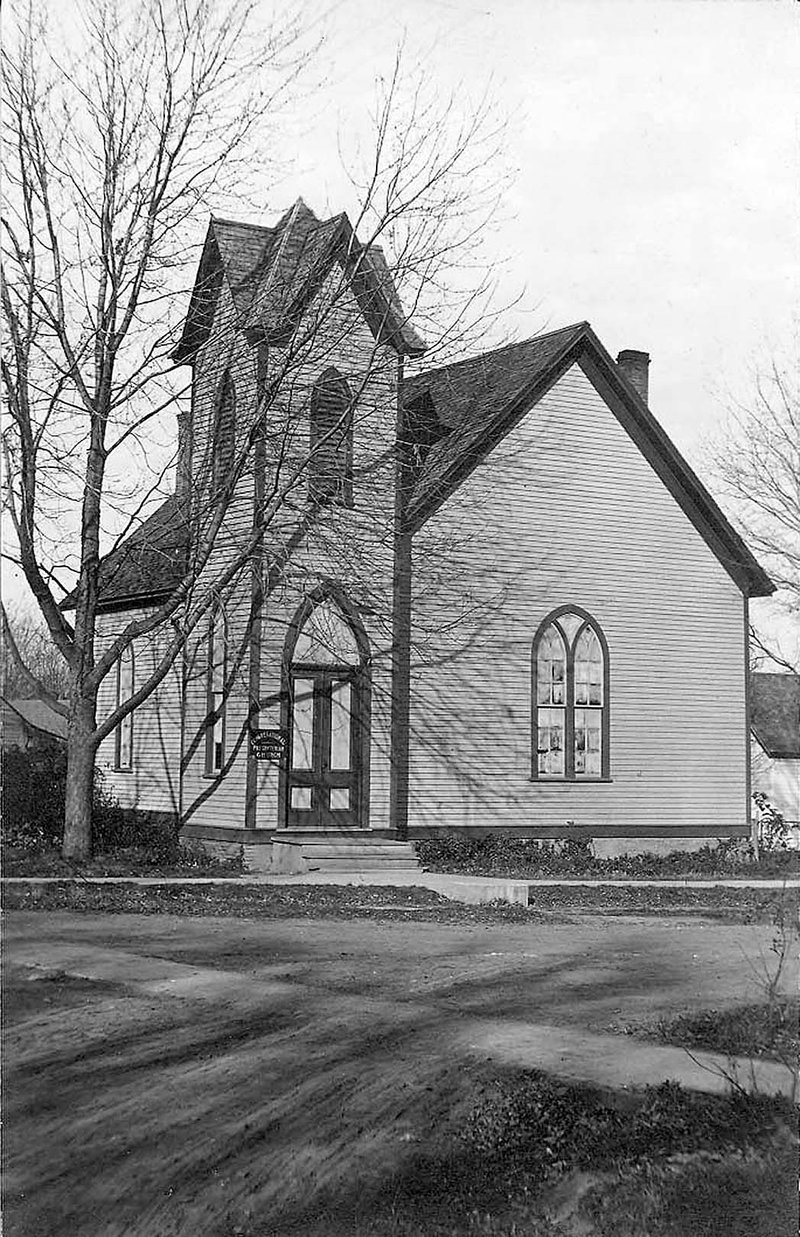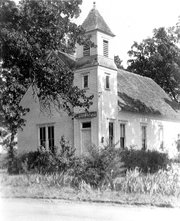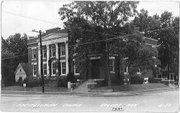"As pioneer settlers moved into Northwest Arkansas in the 1830s and 1840s, they brought with them their religious beliefs" reads a sign that begins the exhibit "Let Us Pray" at the Rogers Historical Museum.
"Let Us Pray" focuses on early churches in Rogers -- some with congregations continuing to worship in the city today. Pictures and artifacts tell the stories.
‘Let Us Pray:
Rogers’ Early Churches’
When: 10 a.m. to 5 p.m. Monday to Saturday, 1 p.m. to 5 p.m. Sunday
Where: Rogers Historical Museum, 322 S. Second St.
Admission: Free
Information: 621-1154, rogershistoricalmus…
"At first, settlers were too scattered to form organized denominations, and services were generally conducted by traveling ministers," the exhibit narrative continues. Among the items on display is a handmade shirt, dated to 1870 and worn by Sylvanius Blackburn, one of those early circuit riders.
"By the 1840s, the Methodist, Baptist and Cumberland Presbyterian congregations had all become active in Benton County," the exhibit reads. But there were still only 12 clergymen in the county 10 years later, so churchgoers often met in homes with lay leaders. The exhibit starts with pictures of early one-room churches, including Tucks Chapel and Oakley Chapel, both members of the United Methodist denomination today.
One of the earliest churches in Rogers was the Congregational Church. The church was founded in 1881 -- the same year the city was founded -- with its building on the corner of Poplar and Second streets. Mrs. C.W. Rogers was instrumental in the church's founding, with her St. Louis congregation donating pews and a pulpit. Rogers was the wife of the St. Louis-San Francisco (Frisco) railroad executive for whom the town was named.
In 1911, the Congregational church merged with the First Presbyterian Church U.S.A., keeping the Presbyterian name. By 1914 the two congregations had moved into a new church building at the corner of Fourth and Walnut.
The Presbyterian church's original building was sold to the Catholic church and moved in 1913. A new building at Fourth and Walnut was designed by architect A.O. Clarke and opened in 1914. As the Presbyterian Church grew with the community, the congregation expanded its home by adding an educational building to the west. Today, the church stands on the corner of New Hope Road and South 26th Street in a modern church built in 1994.
"Let Us Pray" displays one of those original wooden pews from the Congregational church building at Second and Poplar as well as a stained-glass window and a communion table -- with the words "In Remembrance of Me" carved into the front -- from the Presbyterian church building at Fourth and Walnut. A butterfly friendship quilt made by the ladies of the church in the 1930s includes the names Mrs. Winifred Croxdale, Stanley Applegate, Dr. C.L. Moore, Ruby Wilson and many others.
"In addition to their religious functions, the churches of Rogers have played social, cultural and charitable roles in the community," reads the brochure. "Sunday school picnics and church socials offered many local residents an opportunity to socialize with friends and neighbors."
The brochure mentions a community Thanksgiving dinner hosted by the local churches for many years and a soup kitchen in the basement of the Methodist church, "which supplied hot meals to the afflicted and their families during the 1918 influenza epidemic."
Another example of the churches' community involvement was Rogers Academy, Rogers' first school, financed and operated by the Congregational Church. Various churches hosted commencement ceremonies for the school and others as the community grew.
On display is a program from the 21st commencement ceremony, May 28-31, 1905, at First Christian Church. It was a multiple-day event, including recitals, dinners and a business meeting, open to all in the community "for a small admission fee," the display reads.
The Rogers Academy ultimately became part of the Rogers School District. But churches' commitment continued. As the community and number of schools grew, the churches in town shared the responsibility of holding commencement ceremonies or school concerts and recitals for the various schools.
NAN Religion on 09/03/2016



